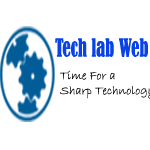A well-designed and programmed interface enhances the user experience, conveys brand identity, and maximizes usability, creating a strong connection between the user and the system, and contributing to the success and acceptance of digital products and applications.
The design and programming of user interfaces play a fundamental role in the development of digital products and applications, considering that the interface is the direct point of contact between the user and the system. Thus, the programming field demands professionals with degrees such as the Professional Master’s Degree Website Management Engineering from TECH, which allows understanding and designing interfaces to improve the user experience, supplying an intuitive, efficient, and pleasant interaction.
In addition, the design and programming of effective user interfaces help to convey the identity of a brand or product, since a well-designed interface reflects the values and aesthetics of a company, showing confidence and strengthening the positive belief of users. Therefore, by considering visual aspects such as graphic design, typography, colors, and interaction elements, a coherent and memorable experience is created for users.
Another key aspect is usability, since interface design and programming focus on ensuring that users can easily interact with the system and achieve their aims efficiently, which implies considering the organization and hierarchy of information, accessibility, rapid response to user actions, and anticipation of their needs.
User Interface Trends for Various Devices
User-centered design has gained relevance thanks to an approach aimed at understanding the user’s needs and desires to create personalized and meaningful interfaces. An example of this is the use of Artificial Intelligence (AI) to adapt the interface in real time according to the user’s behavior and preferences, supplying a more personalized experience.
Another trend is the minimalist and clean design that focuses on simplicity and the reduction of visual clutter, using white space, soft colors and simple visual elements to focus the user’s attention on the most important aspects. Examples of this trend can be found in mobile app designs in which functionality is prioritized and any unnecessary or distracting elements are eliminated.
In addition, adaptive interface design and programming has gained popularity because, with the increase in devices with different screen sizes and capabilities, interfaces allow for a seamless and consistent experience across different platforms. An example of this is a web page that automatically adjusts to look and function correctly on both a cell phone and a computer.
Opening Doors to Professional Success
User interface design and programming offer many benefits for today’s professionals. First, these skills are in high demand in the technology industry, as, with the continued growth of digitization, companies are looking for professionals trained in interface design and programming to create engaging and functional digital experiences.
Having these skills can open doors to exciting and well-paying job opportunities in a wide range of industries. In addition, mastering user interface design and programming enables professionals to create products and applications that effectively meet user needs. Therefore, understanding how to design intuitive and user-friendly interfaces can improve the user experience and increase customer satisfaction.
The field often requires working closely with graphic designers, User Experience (UX) Specialists, and software developers, as, having skills in this environment, professionals can effectively take part in interdisciplinary projects, bringing their ability in creating functional and attractive interfaces.
TECH Technological University
TECH Technological University specializes in offering highly qualified postgraduate programs and its focus on employability has led to an impressive 99% of its graduates working in the first twelve months, according to data from the consulting firm KPMG. This important level of employability reflects the university’s commitment to offering academic programs that respond to the demands of the labor market.
TECH’s proprietary learning method, known as Relearning, is based on asynchrony and self-management. Educational content is presented in an attractive and dynamic way, using multimedia capsules that are used to strengthen and merge students’ knowledge.
Its fully digital learning system makes it possible to supply training to students from anywhere in the world. Thanks to its international trajectory, the university has become a benchmark in distance learning, with an extensive catalog of more than 10,000 programs and more than 100,000 new students each year.





_3-6.jpg)




